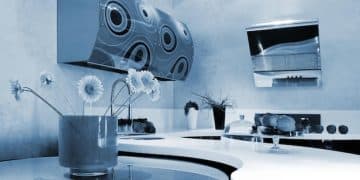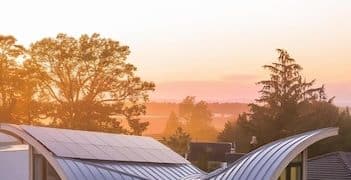LED Bulbs: Save 75% on Lighting Costs & Boost Energy Efficiency
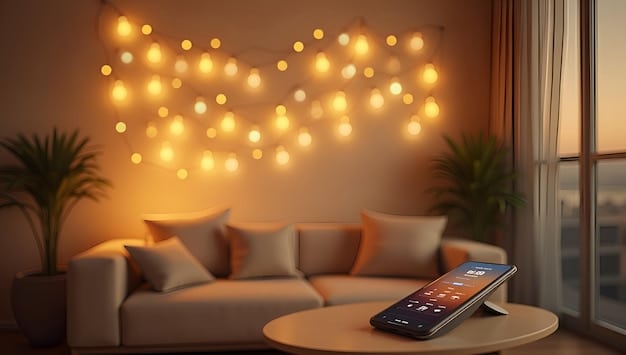
Upgrading to LED bulbs is a transformative step for homeowners, significantly reducing energy consumption and enabling savings of up to 75% on lighting costs, while contributing to a more sustainable and eco-friendly living environment.
In an era increasingly defined by both environmental consciousness and economic sensibility, the simple act of choosing a light bulb has taken on profound significance. We are delving into the tangible benefits of energy-efficient lighting: switch to LED bulbs and save up to 75% on lighting costs. This transition isn’t merely about personal finance; it’s a critical component of sustainable living, offering a powerful blend of cost reduction, environmental stewardship, and enhanced quality of life. As homes and businesses alike seek to minimize their ecological footprint and maximize financial efficiency, understanding the nuances of LED technology becomes paramount.
The Dawn of Efficient Lighting: Understanding LEDs
The journey towards more efficient lighting has been a long one, evolving from incandescent bulbs that squandered most of their energy as heat to the compact fluorescents (CFLs) that offered a partial improvement. Now, Light Emitting Diodes, or LEDs, represent a significant leap forward, redefining what’s possible in illumination technology. Unlike their predecessors, LEDs produce light through electroluminescence, converting electricity directly into light with minimal heat loss. This fundamental difference is what allows them to be so remarkably efficient.
The efficiency of LEDs translates into substantial energy savings. Where an incandescent bulb might use 60 watts to produce a certain amount of light, an LED can achieve the same luminosity with as little as 8-10 watts. This drastic reduction in power consumption directly impacts electricity bills, making the switch an attractive proposition for anyone looking to cut down on household expenses. Moreover, the robust design of LEDs means they are less prone to breaking than traditional glass bulbs, offering a greater degree of durability for everyday use.
Beyond the Bulb: The Economic Impact of LED Adoption
The economic ramifications of widespread LED adoption extend far beyond individual household savings. On a larger scale, the reduced demand for electricity can ease the strain on power grids, potentially delaying the need for new power plant construction and lowering the overall cost of energy distribution. This national-level saving can free up resources for other critical infrastructure projects or contribute to a more stable energy market. Governments and utility companies frequently offer incentives for transitioning to LED lighting, recognizing the broader societal benefits.
- Reduced Grid Strain: Lower overall electricity demand, particularly during peak hours.
- Decreased Carbon Emissions: Less energy consumption translates to fewer greenhouse gas emissions from power plants.
- Extended Product Life: LEDs last significantly longer, reducing manufacturing and disposal needs.
- Financial Incentives: Rebates and tax credits often available to encourage adoption.
From a consumer perspective, the initial investment in LEDs, while sometimes higher than older bulb types, is quickly recouped through energy savings. This rapid return on investment makes LEDs an economically sound choice, especially when considering their longevity. A single LED bulb can last for tens of thousands of hours, potentially eliminating the need for replacements for a decade or more in a typical household. This long life further contributes to cost savings by reducing the frequency of purchases and the hassle of changing bulbs.
The consistent light output and instant-on capabilities of LEDs also enhance the user experience, eliminating the warm-up periods associated with CFLs. Dimming capabilities are also more advanced with LEDs, providing greater control over ambiance and further contributing to energy efficiency when full brightness isn’t required. Ultimately, the shift to LEDs is a wise financial decision that pays dividends both in utility bill reductions and in the comfort and convenience of modern lighting solutions.
Quantifying the Savings: Up to 75% on Lighting Costs
The promise of saving “up to 75% on lighting costs” might sound ambitious, but it’s a verifiable reality for many households and businesses making the switch from traditional incandescent bulbs to LEDs. This significant reduction stems directly from the vastly superior energy efficiency of LED technology. To truly appreciate this, it helps to understand the fundamental difference in how these two bulb types convert electricity into light.
Incandescent bulbs generate light by heating a filament until it glows, a process that inherently wastes a tremendous amount of energy as heat. In fact, a typical incandescent bulb converts only about 10% of the electricity it consumes into visible light, with the remaining 90% lost as heat. LEDs, on the other hand, produce light through a semiconductor process that is far more efficient, losing only a fraction of their energy as heat. This nearly tenfold improvement in efficiency is the cornerstone of the dramatic cost savings.
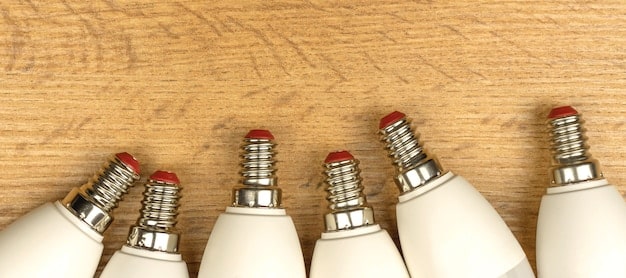
Real-World Economic Benefits of LED Upgrades
Consider a common scenario: replacing a 60-watt incandescent bulb with an equivalent 9-watt LED bulb. If that bulb is on for an average of 3 hours a day, the incandescent bulb consumes 0.18 kilowatt-hours (kWh) daily, while the LED consumes just 0.027 kWh. Over a year, this small difference accumulates. At an average electricity cost of 15 cents per kWh, the incandescent bulb costs approximately $9.85 annually to operate, whereas the LED costs about $1.48. This represents an annual saving of over $8 per bulb, which quickly adds up across an entire household.
- Individual Bulb Savings: A single LED can save $8+ annually compared to an incandescent.
- Household Total: Multiply these savings by the number of bulbs in your home for substantial annual reductions.
- Long-Term Value: LEDs’ extended lifespan means continuous savings for years without replacement costs.
For a home with 20 light fixtures, transitioning all of them from incandescent to LED could result in annual savings of over $160. This is just on energy consumption. When you factor in the extended lifespan of LEDs—often lasting 25,000 to 50,000 hours compared to an incandescent’s 1,000-2,000 hours—the savings on replacement bulbs become equally significant. Over the course of 25,000 hours, you would need to buy 12-25 incandescent bulbs to match the life of a single LED. This dual benefit of reduced energy consumption and infrequent replacement is what allows for the impressive “up to 75%” cost savings claim to be realized.
Furthermore, many utility companies and government programs offer rebates and incentives for consumers to switch to energy-efficient lighting, further reducing the upfront cost of LED bulbs and accelerating the payback period. These programs acknowledge that the widespread adoption of LEDs benefits not only individual consumers but also the broader energy infrastructure by reducing peak demand and overall energy consumption. The move to LED is a clear economic winner, providing a reliable path to significantly lower utility bills.
Beyond Savings: Environmental and Quality of Life Advantages
While the economic benefits of switching to LED lighting are compelling, the advantages extend far beyond just saving money. Adopting energy-efficient lighting solutions carries significant environmental implications and also enhances the quality of life within illuminated spaces. These broader benefits underscore why LEDs are not just a smart financial choice, but a responsible and forward-thinking one for sustainable living.
From an environmental perspective, the reduction in energy consumption directly translates to a decrease in the demand for electricity generated by power plants. A significant portion of global electricity still comes from fossil fuels, which release greenhouse gases and other pollutants into the atmosphere. By using less electricity for lighting, homes and businesses contribute to a lower carbon footprint, helping to combat climate change and reduce air pollution. This conscious choice plays a role in fostering a healthier planet for future generations.
Improved Light Quality and Durability
The quality of light emitted by LEDs has also seen remarkable improvements. Early LED designs sometimes produced harsh or unnatural light, but modern LEDs offer a wide spectrum of color temperatures, from warm, inviting yellows (similar to incandescent) to cool, crisp blues (ideal for task lighting). This versatility allows users to choose lighting that best suits their needs and preferences, creating more comfortable and functional environments. LEDs also provide instant-on illumination without the warm-up time associated with CFLs, and they maintain consistent brightness throughout their long lifespan, unlike traditional bulbs that can dim over time.
- Reduced Carbon Footprint: Lower energy use means less reliance on fossil fuels.
- Less Waste: Extended lifespan of LEDs drastically cuts down on landfill waste from discarded bulbs.
- No Mercury: Unlike CFLs, LEDs do not contain mercury, making them safer for disposal.
- Enhanced Aesthetics: Wide range of color temperatures and dimming options for customized ambiance.
Durability is another unsung hero of LED technology. Unlike fragile incandescent or CFL bulbs, LEDs are solid-state devices without a filament or glass envelope to break. This makes them far more resistant to shocks, vibrations, and temperature fluctuations, significantly extending their operational life. This robustness is particularly beneficial in commercial settings or in homes with active children and pets, where accidental breakages are more common. The reduced need for frequent bulb replacements also saves time and effort, enhancing convenience for homeowners and maintenance staff alike.
Furthermore, LEDs are inherently safer than older lighting technologies. Because they emit very little heat, they reduce the risk of accidental burns and fire hazards, particularly when used in enclosed fixtures or near flammable materials. The absence of mercury, a toxic heavy metal found in CFLs, also makes LEDs a more environmentally friendly and safer choice during disposal. These collective benefits – economic, environmental, and practical – highlight why transitioning to LED lighting is a comprehensive upgrade for any space, offering a myriad of positive impacts.
Making the Switch: A Practical Guide to LED Conversion
Transitioning to LED lighting might seem like a daunting task, but in reality, it’s a straightforward process with immediate and long-term rewards. The key is understanding what to look for and how to approach the conversion systematically. Most modern LED bulbs are designed to be direct replacements for traditional incandescent or CFL bulbs, meaning they fit into existing fixtures without the need for rewiring or special adapters. This “screw-in” convenience is a major factor in making the switch accessible to everyone.
When selecting LED bulbs, the primary considerations are lumens, color temperature, and wattage equivalency. Lumens measure brightness, so an LED with similar lumens to your old bulb will provide comparable light output. Color temperature, measured in Kelvins (K), dictates the warmth or coolness of the light: lower Kelvin ratings (e.g., 2700K-3000K) produce warm, yellowish light, while higher ratings (e.g., 5000K-6500K) yield cool, bluish-white light. Finally, wattage equivalency tells you which LED bulb can replace your old incandescent or CFL, ensuring you get the right brightness while consuming significantly less power.
Choosing the Right LED for Every Space
Different areas of your home or business benefit from different types of lighting. For living rooms and bedrooms, a warm white (2700K-3000K) LED often creates a cozy and inviting atmosphere. Kitchens and bathrooms might benefit from a cooler, brighter light (3500K-4000K or higher) for better visibility and task performance. For outdoor security lighting, a daylight (5000K-6500K) LED offers maximum brightness and clarity. Consider the primary function of each space when making your selections.
- Assess Your Needs: Identify areas needing replacement and their specific lighting requirements (brightness, color).
- Check Compatibility: Ensure bulb bases (e.g., E26 for standard screw-in) match your fixtures.
- Consider Dimming: If you use dimmers, purchase “dimmable” LEDs specifically designed for that function.
- Bulk Purchase for Savings: Buying multi-packs or during sales can reduce upfront costs.
While most LED bulbs are designed to be “plug-and-play,” it’s worth checking if your existing dimmer switches are compatible with LED technology. Older dimmer switches, designed for incandescent bulbs, might cause flickering or buzzing with LEDs. In such cases, upgrading to an LED-compatible dimmer is a minor investment that ensures optimal performance. Many hardware stores and online retailers categorize LED bulbs by their intended use (e.g., recessed lighting, decorative, outdoor), making the selection process even simpler.
Starting with the most frequently used lights in your home or business will yield the quickest return on investment. Replace bulbs in living areas, kitchens, bathrooms, and outdoor fixtures first. As these high-usage bulbs are replaced, you’ll immediately see a noticeable drop in your energy bill. The gradual, room-by-room conversion approach allows you to spread out the initial cost while still enjoying ongoing savings, making the transition to a fully LED-illuminated space both practical and financially sound.
Addressing Common Misconceptions About LEDs
Despite their growing popularity and undeniable benefits, LEDs are still subject to certain misconceptions that can deter potential adopters. One of the most common myths is the perception of high upfront costs. While it’s true that individual LED bulbs initially cost more than their incandescent counterparts, this overlooks their long-term value. The significantly extended lifespan and drastic energy savings quickly offset the initial investment, often within a year or two, making them a more economical choice over their operational lifetime.
Another prevalent concern is the quality of light. Early generations of LEDs sometimes produced a harsh, clinical light or experienced issues with dimming. However, modern LED technology has advanced tremendously. Today, LEDs are available in a wide spectrum of color temperatures, from warm, soft glows that replicate traditional incandescent light to bright, natural daylight tones. Many models are also explicitly designed to be dimmable, providing smooth and consistent light control without flickering or buzzing. The perception of poor light quality is largely outdated.
Dispelling Myths on Compatibility and Disposal
A common concern revolves around compatibility with existing fixtures. Most residential LED bulbs sold today are designed with standard screw bases (E26 in North America) and can directly replace incandescent or CFL bulbs in existing sockets. While specialized fixtures might require specific LED types, the vast majority of conversions are simple screw-in replacements. The notion that a complete overhaul of lighting infrastructure is necessary for LED adoption is generally unfounded, though checking dimmer switch compatibility is always a good practice.
- Cost vs. Value: Higher upfront cost is offset by long-term savings and extended lifespan.
- Light Quality Improvement: Modern LEDs offer diverse color temperatures and smooth dimming.
- Easy Compatibility: Most LEDs are direct screw-in replacements for existing fixtures.
- Eco-Friendly Disposal: LEDs don’t contain mercury, simplifying disposal compared to CFLs.
Finally, there’s often confusion about the disposal of LEDs. Unlike CFLs, which contain small amounts of mercury and require special recycling, LEDs are mercury-free. While recycling is always encouraged for any electronic waste to recover valuable materials, LEDs are not classified as hazardous waste in the same way CFLs are. This makes their disposal simpler and more environmentally sound, reducing the risk of toxic chemicals entering landfills. Manufacturers are also increasingly using recyclable materials in LED components, further reducing their environmental impact.
It’s important for consumers to approach the transition with accurate information. By understanding the true performance, cost-effectiveness, and environmental benefits of modern LED lighting, individuals can confidently make the switch, reaping the full spectrum of rewards that this advanced technology offers. Overcoming these lingering misconceptions is key to widespread adoption and maximizing the positive impact of energy-efficient lighting.
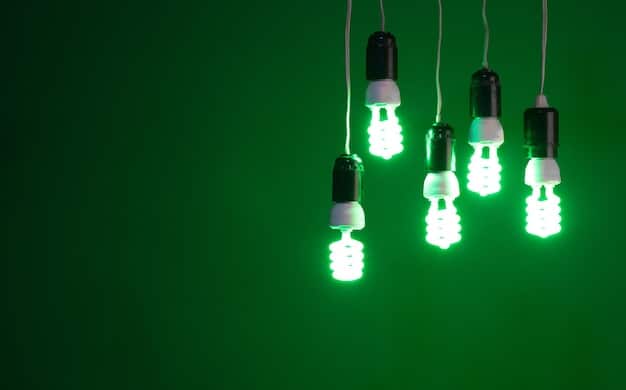
Innovations and Future Trends in LED Technology
The pace of innovation in LED technology continues to accelerate, promising an even brighter and more efficient future for lighting. Beyond mere illumination, future LEDs are poised to integrate more seamlessly into smart home ecosystems, offer enhanced capabilities, and contribute to specialized applications that extend far beyond general lighting. This ongoing evolution means that the benefits currently enjoyed by LED users are just the beginning of what’s possible.
One key trend is the development of “smart” LEDs that offer unparalleled control and connectivity. These bulbs can be controlled via smartphones, voice assistants, or smart hubs, allowing users to adjust brightness, color temperature, and even color on demand. Geofencing capabilities can turn lights on or off as residents enter or leave a vicinity, optimizing energy use. The integration with smart sensors can allow lighting to adapt automatically to ambient light levels or occupancy, pushing energy efficiency to new frontiers.
Beyond Illumination: Health, Horticulture, and Connectivity
The applications for LED technology are expanding into areas once deemed science fiction. In the realm of health and well-being, “human-centric lighting” is gaining traction. This involves LEDs that can be tuned to mimic natural light cycles, supporting circadian rhythms and improving sleep, mood, and productivity. Specialized LEDs are also being developed for therapeutic uses, such as light therapy for seasonal affective disorder or specific skin conditions, offering tailored solutions for diverse needs.
- Smart Home Integration: Enhanced control via apps, voice, and automation.
- Human-Centric Lighting: Adjustable light to support natural circadian rhythms and well-being.
- Horticultural Lighting: Optimized spectrums for accelerated plant growth.
- Li-Fi Technology: Potential for data transmission through light, revolutionizing connectivity.
Horticulture is another exciting frontier for LED innovation. “Grow lights” using specific LED spectrums are transforming indoor farming, allowing plants to grow more efficiently and with less energy than traditional methods. These tailored light recipes can optimize growth for various crops, reduce water usage, and enable food production in urban environments, contributing to local food security and sustainability. This specialized application highlights the versatility of LED technology in supporting diverse industries.
Perhaps one of the most revolutionary future applications of LEDs is Li-Fi, or Light Fidelity. This technology uses visible light communication to transmit data, potentially offering an alternative or complement to Wi-Fi. Imagine a future where your light fixtures not only illuminate your space but also provide high-speed, secure internet access. This concept leverages the rapid on-off switching capabilities of LEDs (undetectable to the human eye) to send information, opening up new possibilities for connectivity and smart infrastructure. These innovations ensure that LEDs remain at the forefront of energy efficiency and technological advancement.
Long-Term Benefits and Sustainable Living
The decision to switch to LED lighting is not just about immediate savings; it’s a profound commitment to long-term sustainability and a more resilient way of life. The cumulative effect of widespread LED adoption goes far beyond individual utility bills, influencing energy policy, environmental health, and the very concept of resource management. Embracing energy-efficient lighting is a tangible step towards a future where human impact on the planet is minimized, and resources are used wisely.
From a global perspective, the widespread shift to LEDs significantly reduces overall energy demand, which in turn diminishes the reliance on fossil fuels for electricity generation. This has direct benefits for climate change mitigation, lowering greenhouse gas emissions and contributing to cleaner air. As more countries and communities adopt LED technology, the collective reduction in carbon footprint becomes a powerful driver for environmental protection. This is a core tenet of sustainable living: making choices that benefit both current and future generations.
Shaping a Greener Future with Every Bulb
The extended lifespan of LED bulbs also contributes to sustainability by reducing waste. Fewer bulbs need to be manufactured, transported, and ultimately discarded into landfills. This reduces the consumption of raw materials, the energy required for manufacturing, and the environmental burden of waste disposal. It embodies the principles of a circular economy, where products are designed for durability and minimal environmental impact throughout their lifecycle.
- Reduced Resource Consumption: Less raw materials and manufacturing energy thanks to longevity.
- Global Climate Impact: Collective energy savings contribute to significant emissions reductions.
- Enhanced Energy Security: Lower demand reduces dependence on finite energy sources.
- Inspiring Further Innovation: LED success encourages research in other green technologies.
Furthermore, the economic stability gained from lower energy bills can free up household and business capital for other sustainable investments, such as solar panels, energy-efficient appliances, or insulation upgrades. This creates a positive feedback loop: initial savings from LEDs can fund further eco-friendly improvements, amplifying the overall impact on sustainability. The financial benefits serve as a catalyst for deeper engagement with sustainable practices, turning a simple bulb change into a cornerstone of a greener lifestyle.
Ultimately, the broad adoption of LED lighting represents a tangible victory in the ongoing effort to create a more sustainable world. It proves that technological innovation can align perfectly with environmental stewardship and economic sensibility. By choosing LEDs, individuals, businesses, and governments are not just illuminating spaces; they are lighting the path towards a more energy-efficient, environmentally conscious, and resilient future for all. This is the essence of building a truly sustainable living paradigm, one bulb at a time.
| Key Benefit | Brief Description |
|---|---|
| 💡 Energy Savings | LEDs reduce electricity consumption by up to 75% compared to incandescent bulbs. |
| 💰 Cost Reduction | Significant savings on utility bills and infrequent bulb replacements due to long lifespan. |
| 🌍 Environmental Impact | Lower carbon footprint, reduced waste, and mercury-free composition. |
| 🔗 Enhanced Experience | Superior light quality, durability, and smart home integration possibilities. |
Frequently Asked Questions About LED Lighting
▼
You can save up to 75% on your lighting costs by switching from incandescent to LED bulbs. This reduction comes from LEDs consuming significantly less electricity for the same light output. For example, replacing a 60-watt incandescent with a 9-watt LED can save over $8 per bulb annually, leading to substantial household savings over time.
▼
Yes, LED bulbs are environmentally friendly. Their high energy efficiency reduces electricity demand, which in turn lowers greenhouse gas emissions from power plants. Additionally, LEDs have a much longer lifespan than traditional bulbs, reducing waste in landfills, and unlike CFLs, they do not contain toxic mercury.
▼
Absolutely. LEDs have an incredibly long operational lifespan, often lasting 25,000 to 50,000 hours. In contrast, incandescent bulbs typically last only 1,000-2,000 hours, and CFLs around 8,000-10,000 hours. This superior durability significantly reduces the frequency of bulb replacement, saving time and money.
▼
Most modern LED bulbs are designed to be direct screw-in replacements for traditional bulbs, fitting into existing fixtures. However, if you use dimmer switches, ensure you purchase “dimmable” LED bulbs. Older dimmer switches designed for incandescent bulbs might cause flickering with LEDs, so an upgrade to an LED-compatible dimmer might be necessary for optimal performance.
▼
Color temperature, measured in Kelvins (K), describes the perceived warmth or coolness of an LED’s light. Lower Kelvin values (e.g., 2700K-3000K) produce a warm, yellowish light ideal for cozy environments, while higher values (e.g., 5000K-6500K) yield a cool, bluish-white light suitable for task-oriented areas. It matters for creating the desired ambiance and functionality of a space.
Conclusion
The transition to LED lighting represents more than just an upgrade; it’s a strategic embrace of superior technology that simultaneously addresses pressing financial concerns and crucial environmental imperatives. The promise of saving up to 75% on lighting costs is not merely a marketing claim but a demonstrated reality, underpinned by LEDs’ remarkable energy efficiency and extended lifespan. Beyond the tangible monetary benefits, the widespread adoption of LEDs contributes significantly to a reduced carbon footprint, minimizes waste, and offers enhanced light quality and control, enriching our living and working environments. As we look towards a future increasingly defined by sustainable practices, the simple act of choosing an LED bulb stands out as a powerful, accessible step towards a more energy-efficient, economically sound, and environmentally responsible world. It is an investment that pays dividends, illuminating a path to a brighter, more sustainable future for all.

